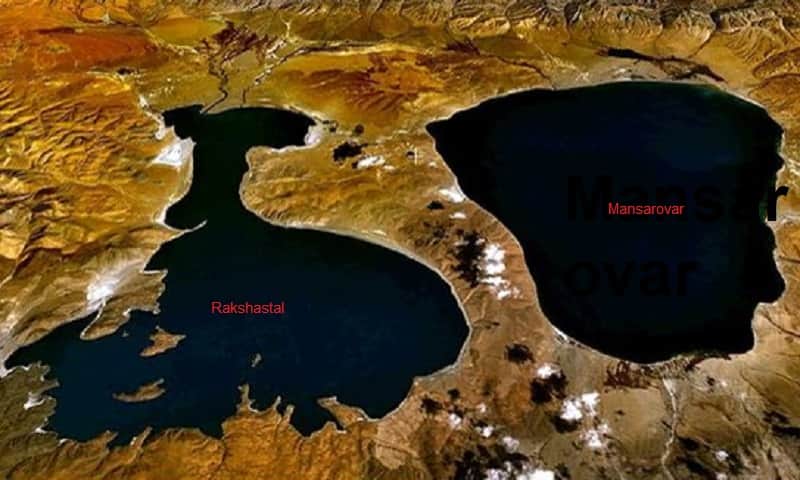Amidst the enchanting allure of the foothills of Mount Kailash rests the famed Mansarovar Lake, a picturesque body of water that has captured the hearts of countless individuals. This enchanting lake has earned international acclaim for its serenity and picturesque surroundings. The breathtaking view of the lake is truly mesmerizing, leaving an indelible impression on the hearts of beholders. The lake ranks among the highest freshwater lakes globally, boasting an impressive elevation of 4,583 meters, encompassing an expansive area of 412 square kilometers.
Adjacent to Mansarovar Lake lies another prominent lake known as Rakshastal. While Mansarovar is a freshwater lake, Rakshastal, in contrast, possesses saline water, rendering it unfit for drinking. The proximity of these two lakes adds an intriguing dimension to the natural landscape, creating a striking contrast between their respective properties. Rakshastal's name is well-known among those familiar with the region. The absence of farming and visitors is a notable characteristic of this lake's surroundings. The untouched landscape around the lake remains free from agricultural activities, preserving its natural beauty.
Read:-The Sacred Bond Between Shambhala and Mount Kailash
The name of this lake holds a fascinating significance, as it directly translates to "lake of the demon" in Sanskrit. It is also commonly referred to as Ravan Tal due to its association with the legendary figure of Ravan, the demon-like King of Lanka. The lake is believed to be the very site where Ravan undertook intense penance, adding an element of myth and intrigue to its already entrancing presence. The fascinating link to ancient lore infuses the lake with an air of mystery and charm, enhancing its already pleasant and enchanting aura. Within the context of Buddhism, Lake Manasarovar, with its round shape akin to the sun, symbolizes "brightness," while Rakshastal resembling a crescent, represents "darkness."
Flowing between the two lakes, Manasarovar and Rakshastal, is a short river called Ganga Chhu. According to belief, this river was created by ancient rishis (sages) to channel pure water from Lake Manasarovar into Rakshastal. This symbolic act serves as a reminder of the eternal struggle between purity and darkness, adding a profound spiritual dimension to the interconnected lakes and the river that unites them.
Read:-Why Is It Forbidden To Take A Dip In Mansarovar Lake?













0 comments:
Post a Comment